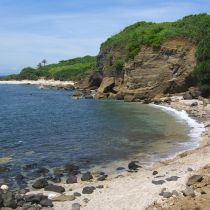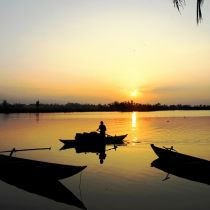QUANG TRI PROVINCE Square: 4747,0 km 2 . Population: 600,5 thousands people (2010) City: Dong Ha City. Districts: Vinh Linh, Gio Linh, Cam Lo, Trieu Phong, Hai Lang, Huong Hoa, Da Krong, Con Co. OVERVIEW Located on North - Central Vietnam, Quang Tri is surrounded by Quang Binh Province on the north, Thua Thien-Hue Province on the south, Savanakhet (Laos)on the west, East Sea on the east with 75km seaside. Topography consists of...



